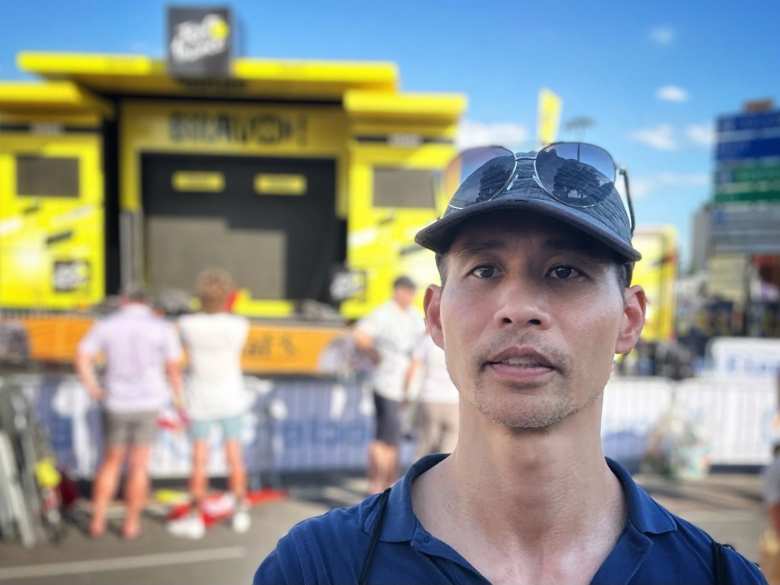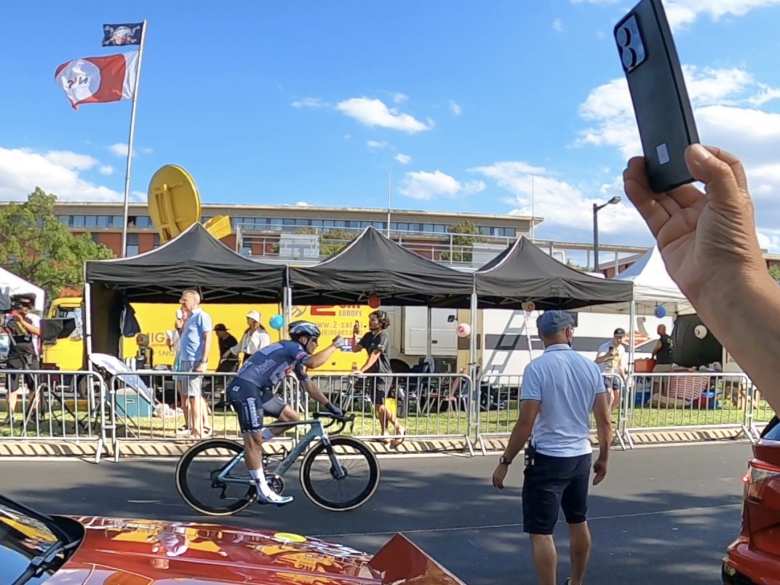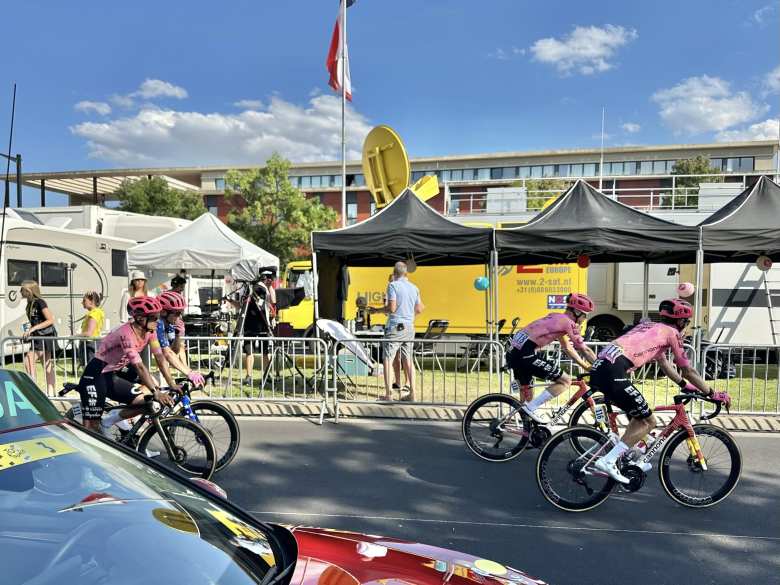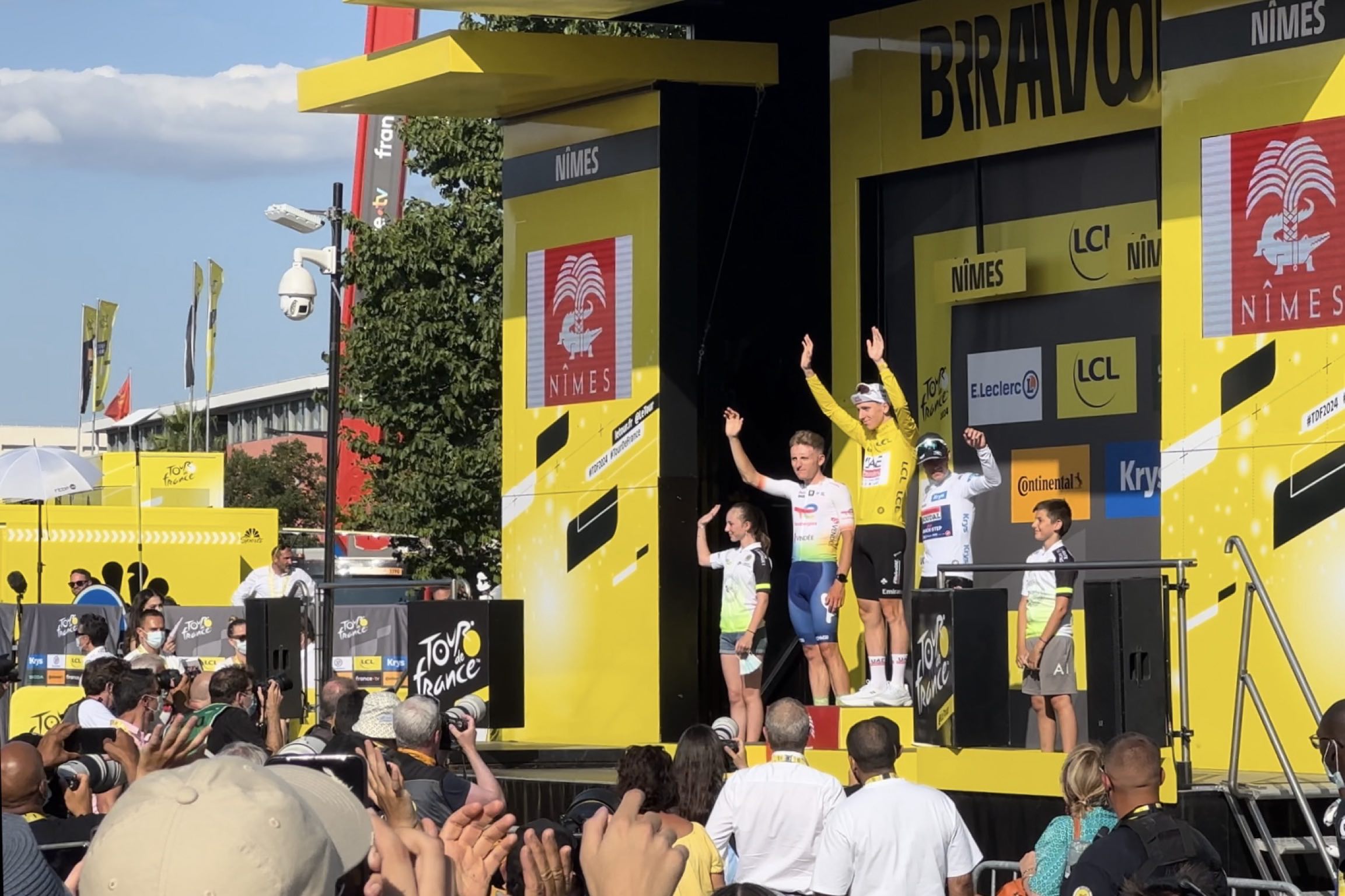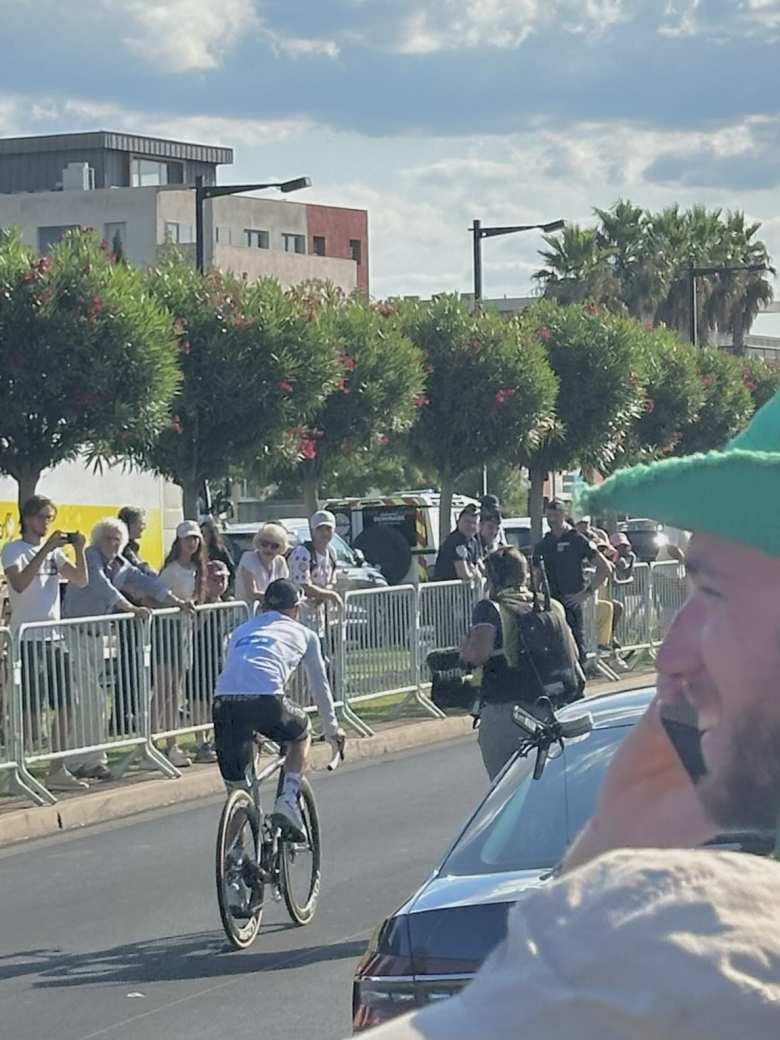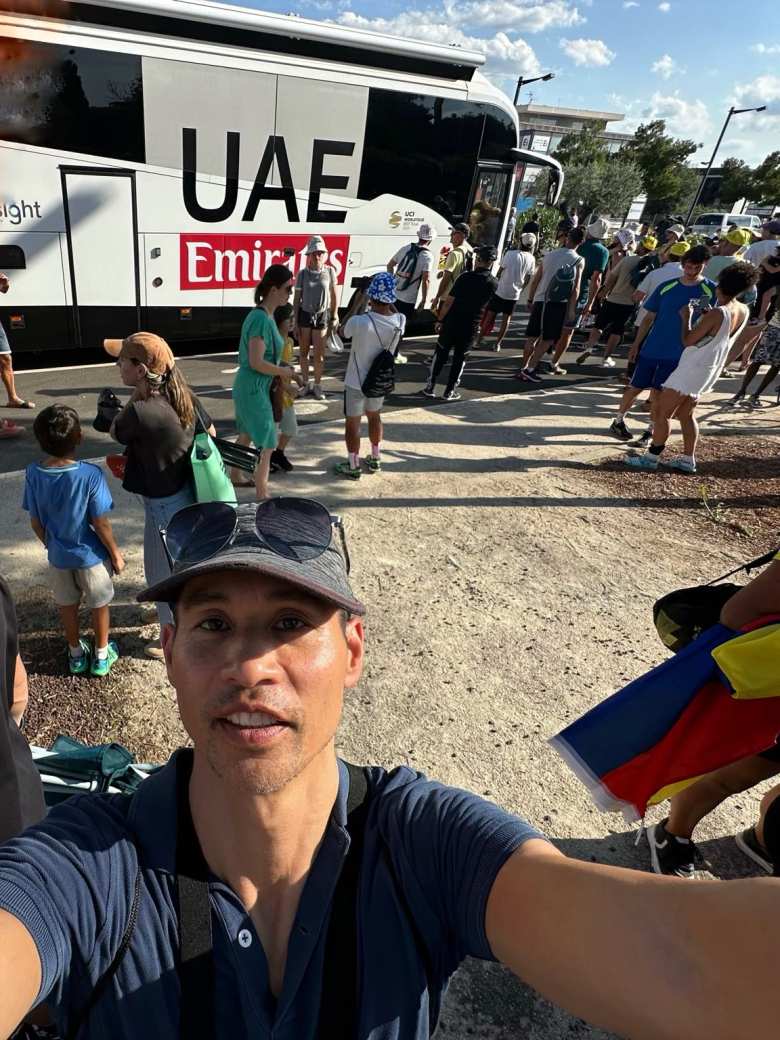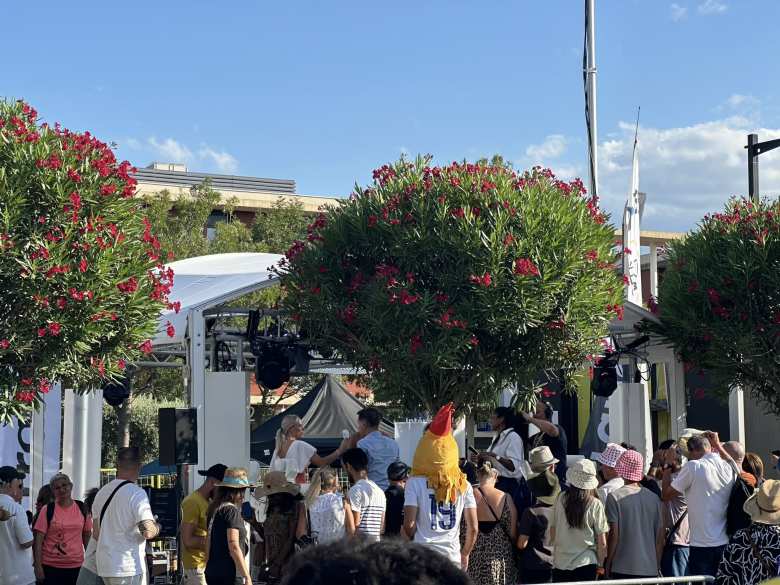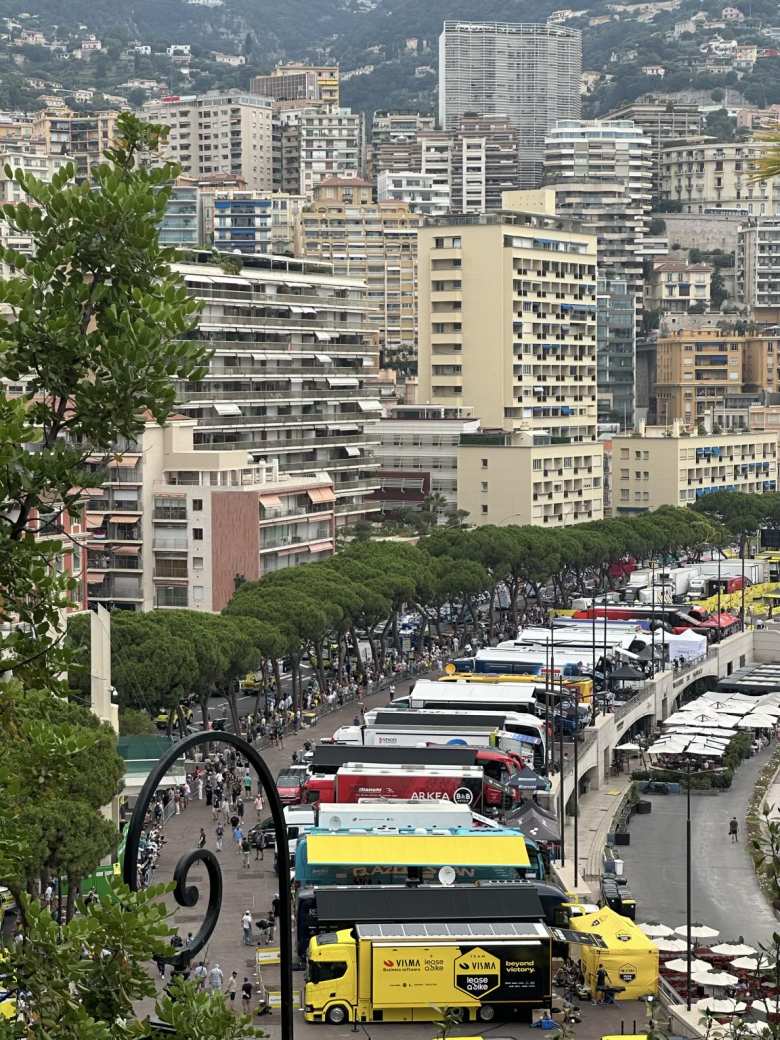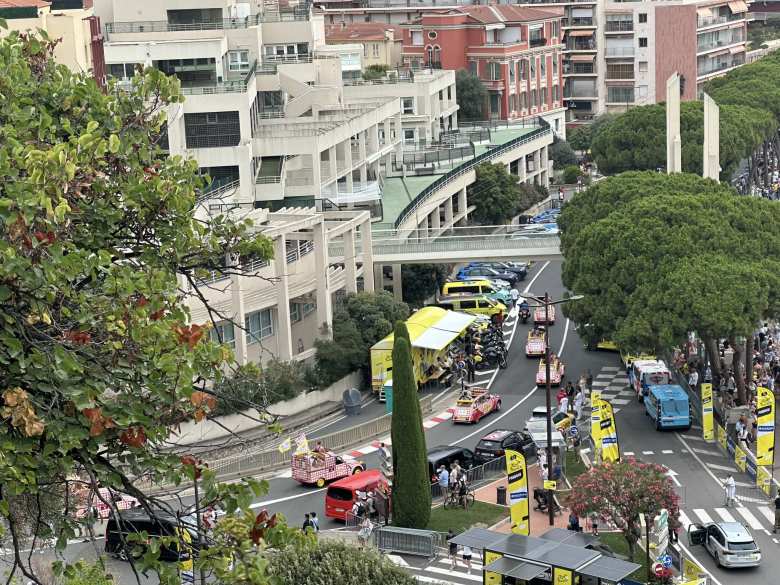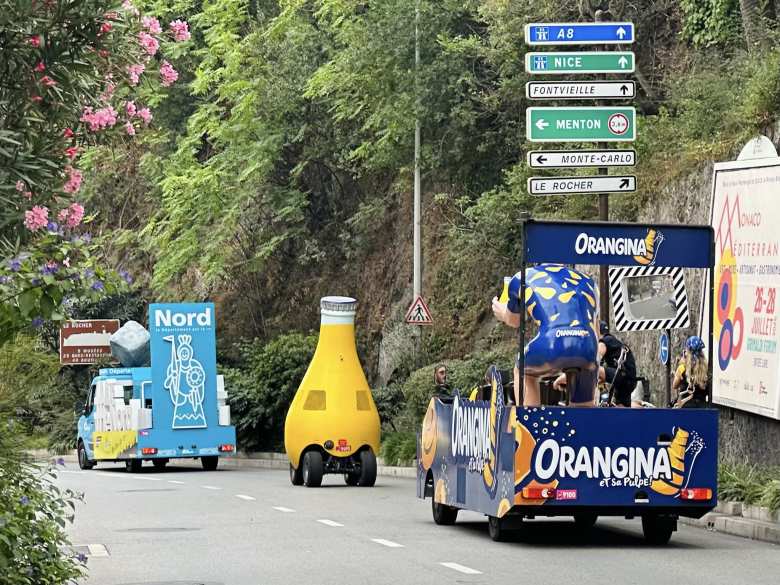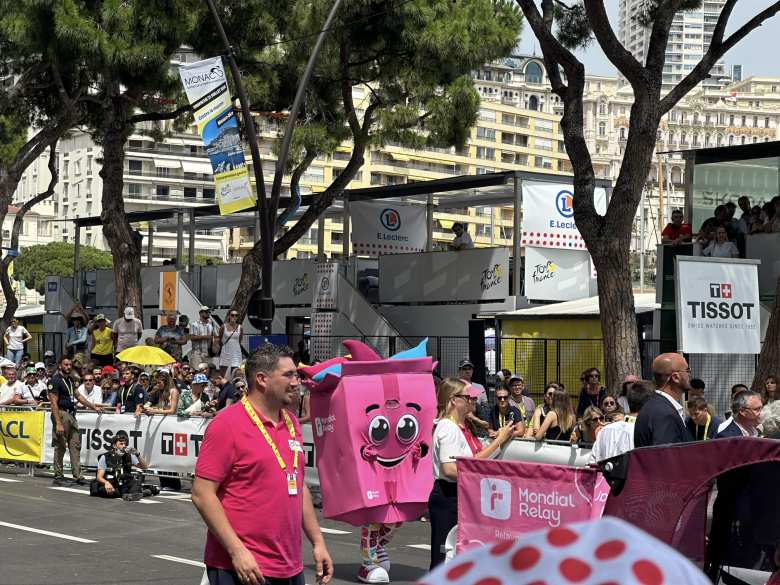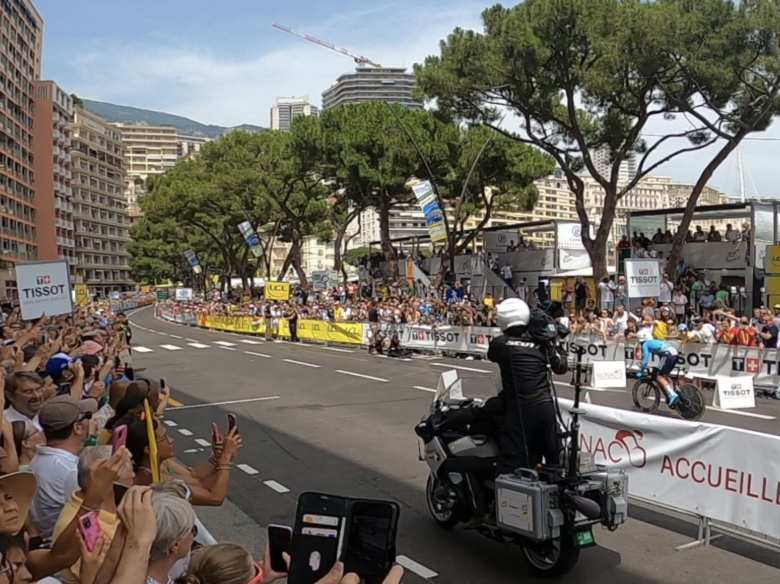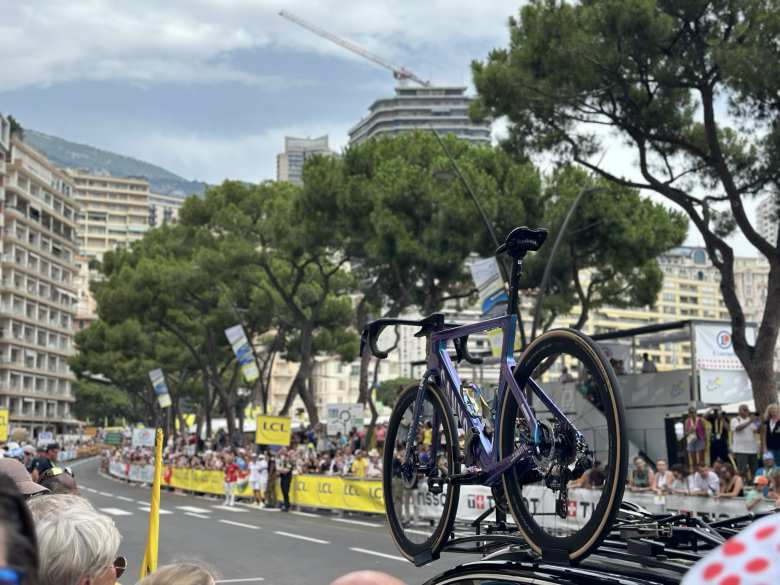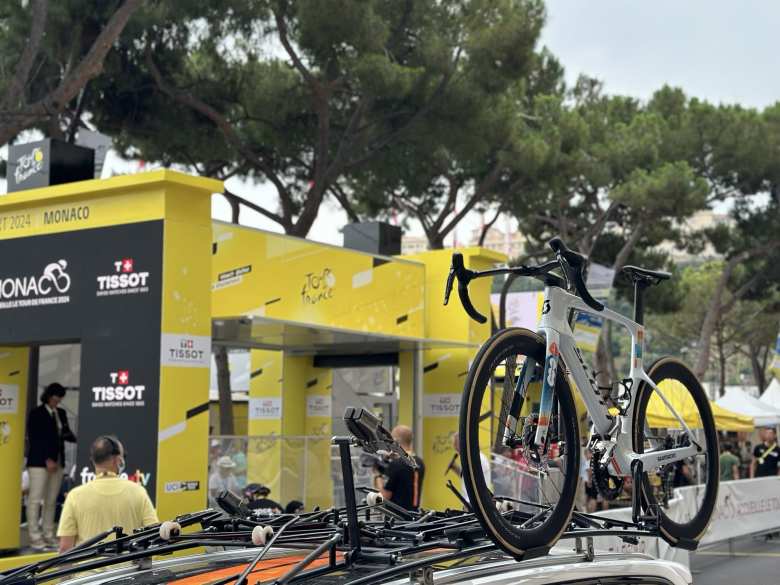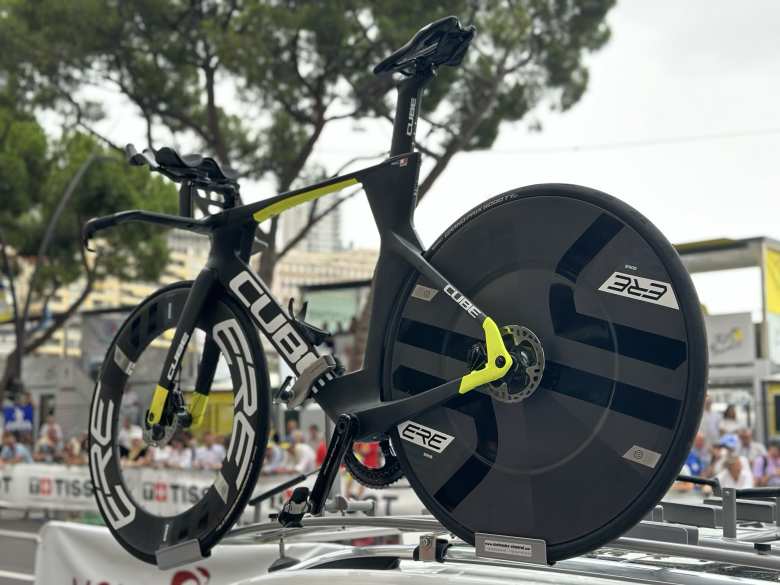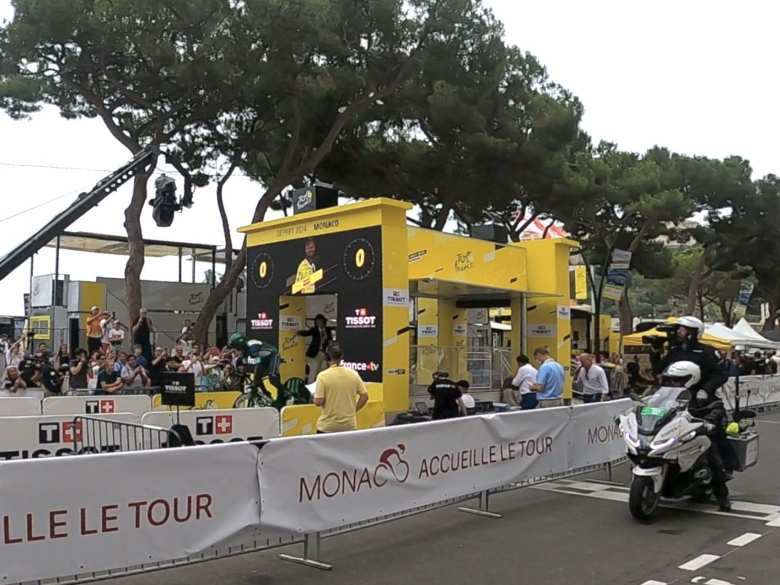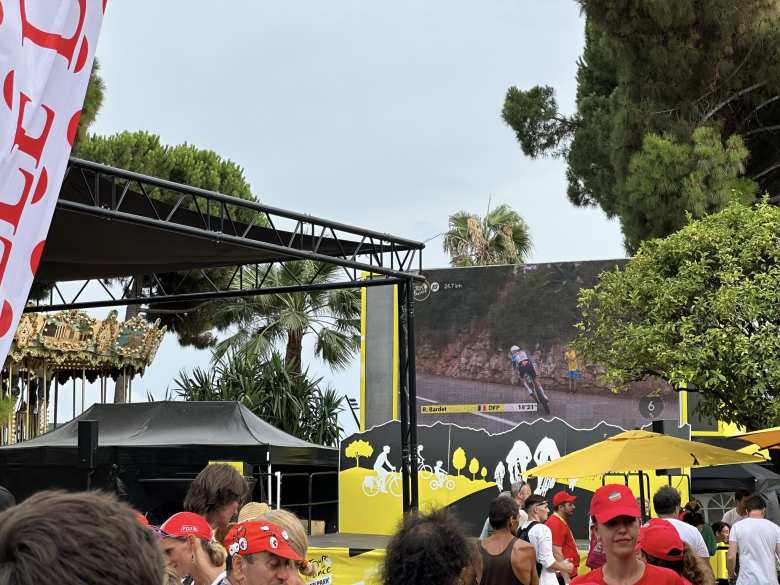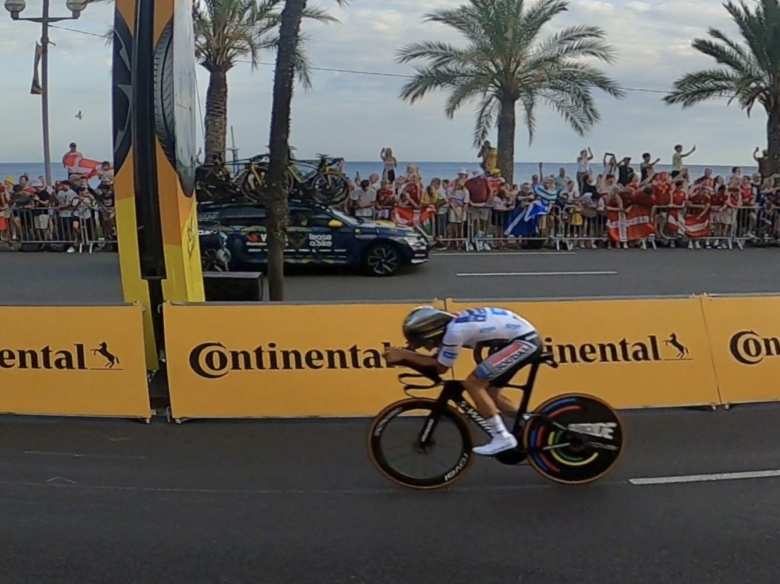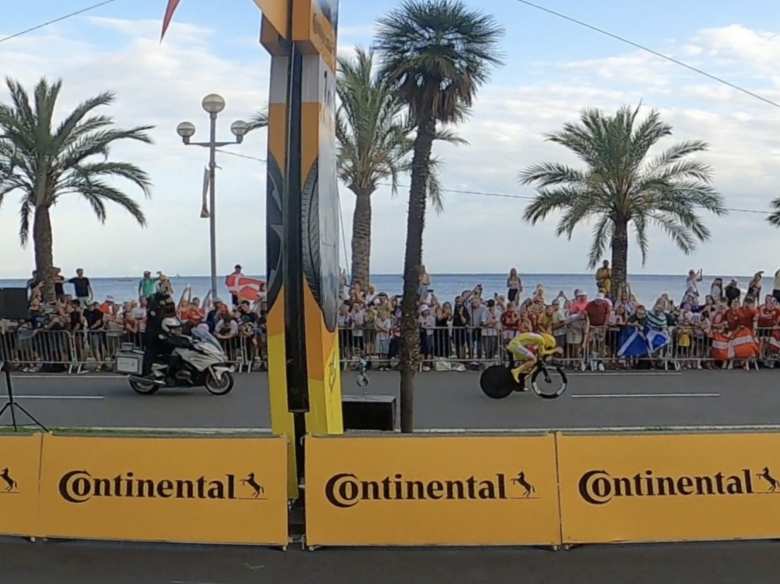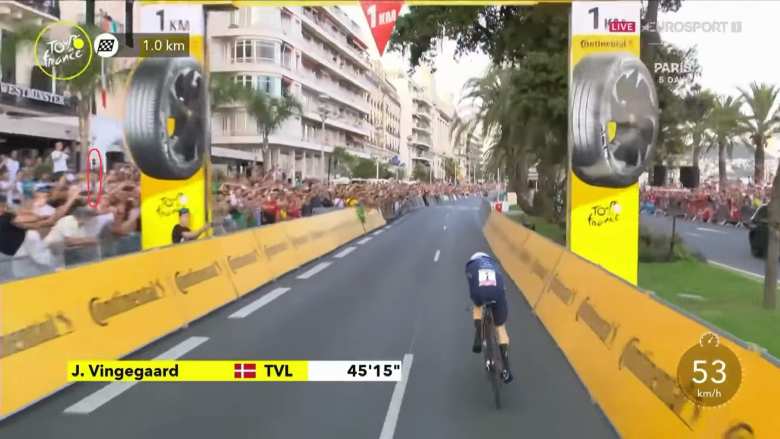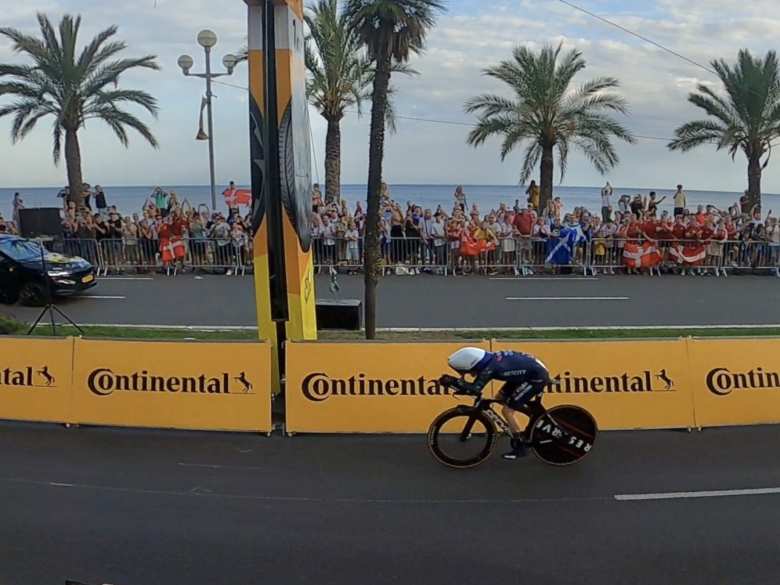Watching the Tour de France in Person: A Bucket List Experience
Living in Spain has its advantages, and one of the best is being so close to France. As a cycling enthusiast, watching the Tour de France in person has always been a bucket list item for me. This year, I finally had the chance to make it happen, and it turned out to be one of the most thrilling Tours ever, thanks to the quality of the talent involved. The “Big Four” of the race—defending champion Jonas Vingegaard, two-time winner Tadej Pogačar, multiple Grand Tour winner Primož Roglič, and emerging Belgian superstar Remco Evenepoel—ensured that the competition was fierce.
Unfortunately, by the time I made it to France to watch a stage, Roglič had already crashed out of the race. It’s unfortunate, but crashing has been a recurring theme in his career.
Stage 16: Nîmes
I traveled to Montpellier and took a train to Nîmes for Stage 16, which was set to be a sprint stage. From the train station, I walked about a mile to the city center, where it was easy to find the finish line of the race. The Tour de France podium was just behind it, adding to the excitement.
I positioned myself 100 meters behind the finish line, reasoning that this spot would allow me to see the individual riders as they slowed down after crossing the line. I figured I could always catch the final sprint highlights on YouTube later.
The first rider I saw was Jasper Philipsen, celebrating his victory with a classic one-arm-in-the-air salute. He was a pre-race favorite for the sprint stages, and this win was well-earned after several near misses.
Shortly after, Mark Cavendish rolled in, finishing in 16th place. Earlier in the race, Cavendish had made history by breaking his tie with Eddy Merckx for the most Tour de France stage wins ever—35 in total. Watching him compete at 39 years old was incredibly inspiring, even if this stage wasn’t his best performance. CyclingNews.com would later declare (minutes later) that his final sprint marked “the end of an era.”
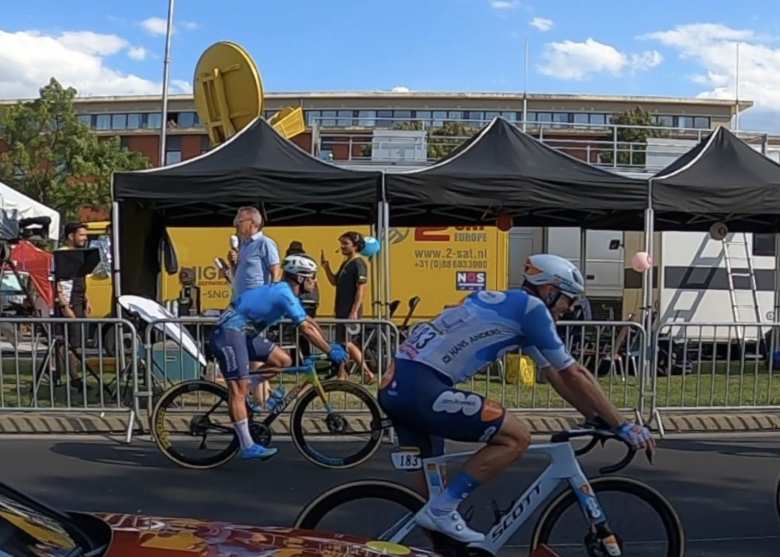
It was slightly bittersweet. Unlike his past victories on the Champs-Élysées in Paris, this stage was a far cry from that grandeur. Instead, it ended on a nondescript arterial road outside Nîmes, next to one of France’s 1,564 McDonald’s locations. After the race, I found myself inside that very McDonald’s, filling my belly with the first Mickey D’s burger for the first time in years and reflecting on the day’s historical events.
I stuck around for the awards ceremony and got to see Pogačar in the yellow leader’s jersey and Evenepoel in the best young rider’s white jersey, both waving to the crowd just 20 meters away from where I was standing. It was also a treat to spot Marion Rousse, the celebrity commentator for France TV, former French national cycling champion, current race director of the Tour de France Femmes, and partner of national cycling hero Julian Alaphilippe. Seeing her in person added an extra layer of excitement to the day.
Interestingly, I later found out through Instagram that my friend Ron from Fort Collins was also in Nîmes for the stage, though he was positioned at the 1 km banner. We had no idea we were both there at the same time—a missed opportunity to catch up and share the experience. Too bad, because otherwise that could have ranked among my most serrendipitous small-world coincidences.
The Final Stage: Monaco to Nice
I was also lucky enough to catch the final stage of the Tour de France in person. This year’s final stage was unique, as it didn’t finish on the Champs-Élysées in Paris. Due to the upcoming Olympics, the stage was a time trial from Monaco to Nice, marking the first time the Tour’s finale wasn’t in Paris in its 111-year history. It was also the first final time trial since Greg LeMond’s famous victory in 1989.
For the weekend, I booked a hotel in Nice and took a train to Monaco. I accidentally overshot the city center but ended up walking across the entire length of Monaco, starting in the east—a happy accident that allowed me to see more of the city.
The time trial started near the harbor of Port Hercules in Monaco, just west of the Monte Carlo Casino Square, made famous by the Formula 1 race. Mark Cavendish, being the lanterne rouge (the last in the overall standings), was the first rider to start. Seeing him start near such an iconic location was a memorable moment.
I also watched Binian Girmay, the first black African to win a stage of the Tour de France, start his time trial. Girmay had won three sprint stages and the green jersey for the overall best sprinter—a historic achievement.
But I waited especially to see Mathieu van der Poel, the reigning World Champion, take off. Interestingly, he used his regular Canyon Aeroad bike with drop bars, rather than a dedicated time-trial bike like the top GC contenders. Despite this, he finished a respectable 42nd place, only 5 minutes and 11 seconds behind Pogačar.
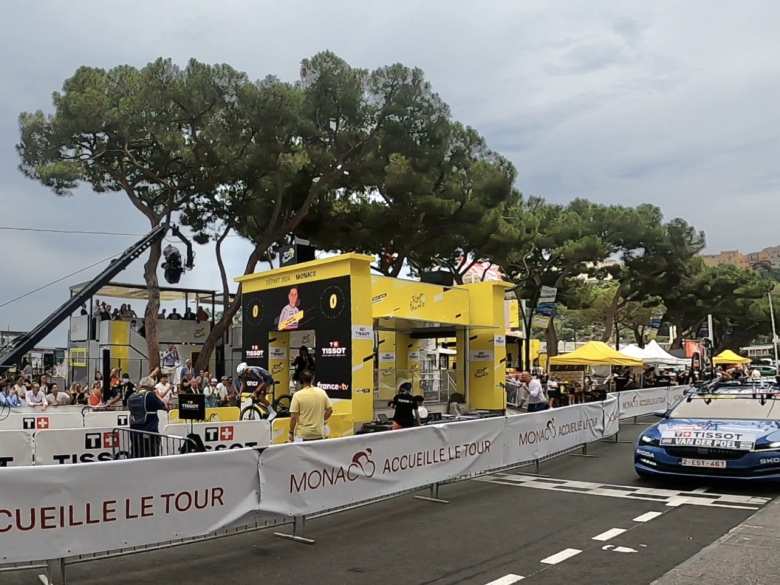
After van der Poel’s start, I made my way back to the train station to return to Nice. The crowds were enormous, and several people couldn’t get on the train before mine due to the sheer number of spectators.
In Nice, I found a spot near the 1 km-to-go banner, which was perfect for watching the main GC contenders. I snapped photos of the top three—Pogačar, Vingegaard, and Evenepoel—as they flew by. All three lived up to the pre-race hype, proving they were heads and shoulders above the rest. Pogačar won the time trial and secured his third overall Tour de France victory, but both Vingegaard and Evenepoel made the race thrilling and competitive until the very end. While Pogačar’s world-beating fitness was mindblowing, the other two superstars were particularly impressive considering their horror crash at Itzulia Basque Country just months earlier that landed both in the hospital.
If you’d like a better sense of watching the yellow jersey whiz on by at 35 miles per hour, here is a video I took in Nice with 1 km to go.
Conclusion
Watching the Tour de France in person was everything I had hoped for and more. It was a bucket list experience to see the world’s best cyclists up close, and the icing on the cake was to witness history in the making. This experience has only deepened my love for the sport and left me with unforgettable memories.
